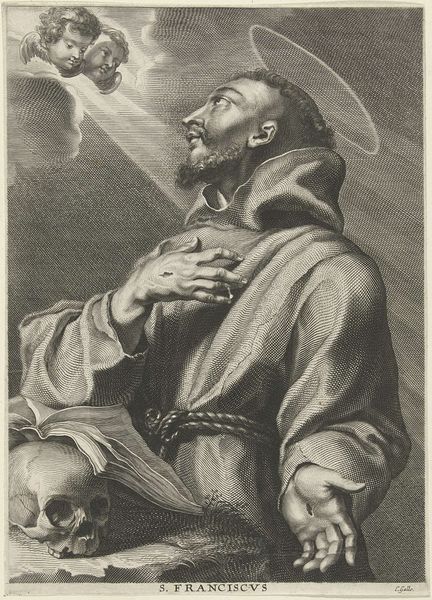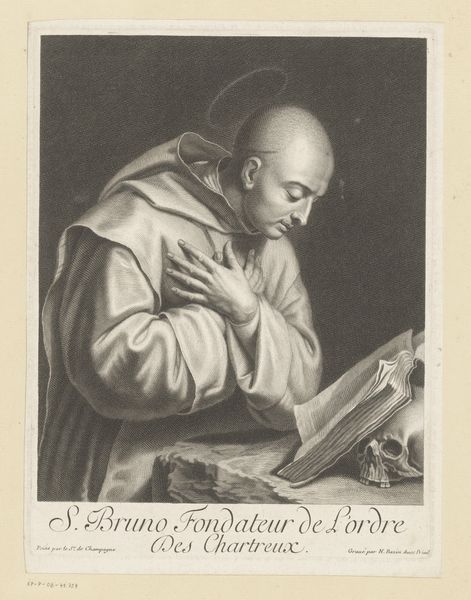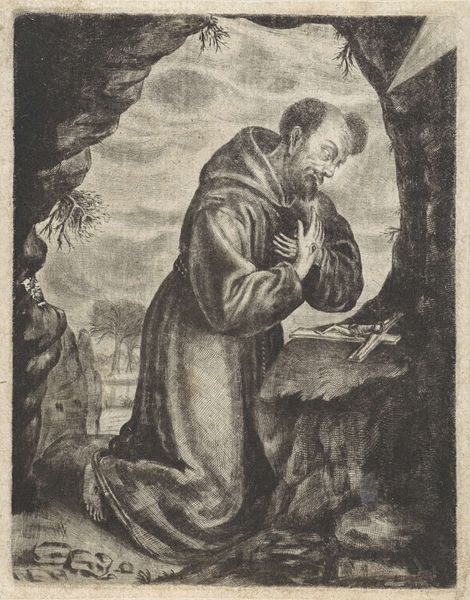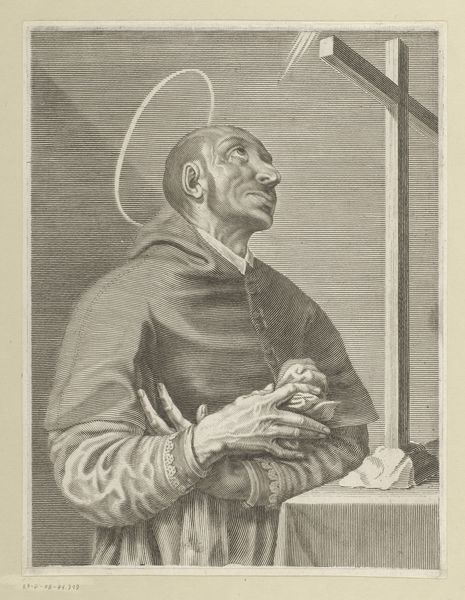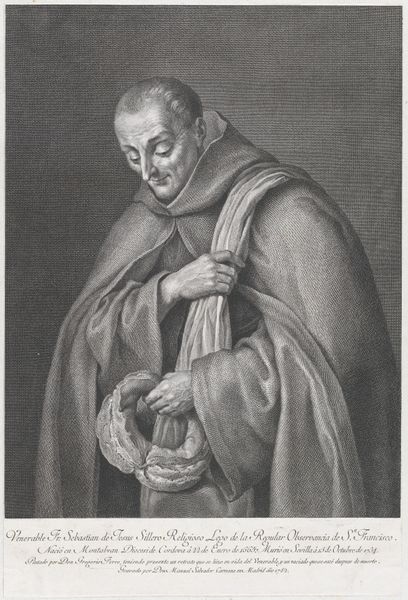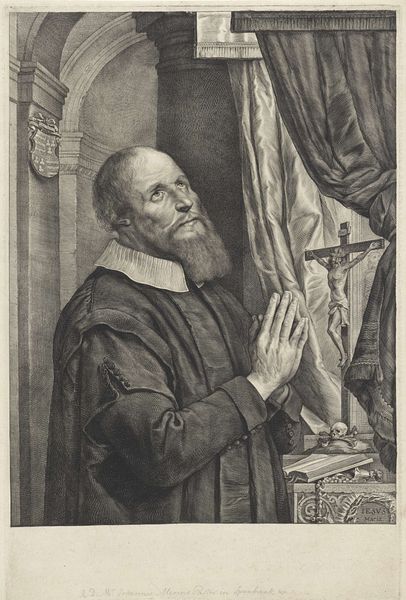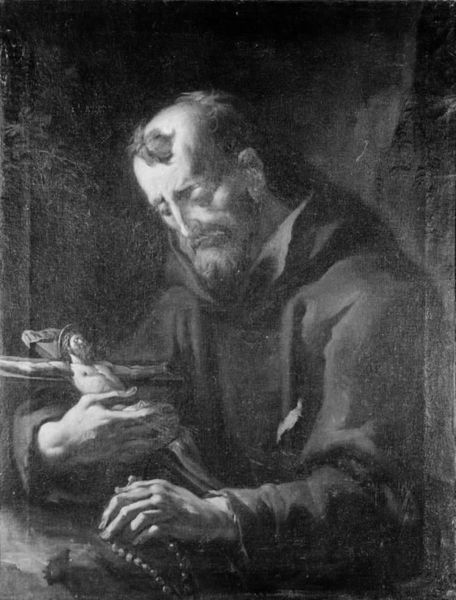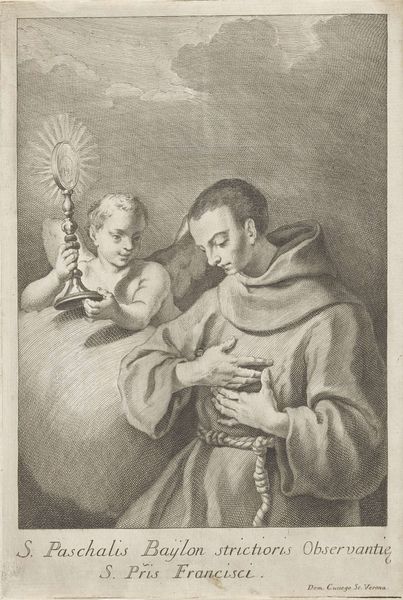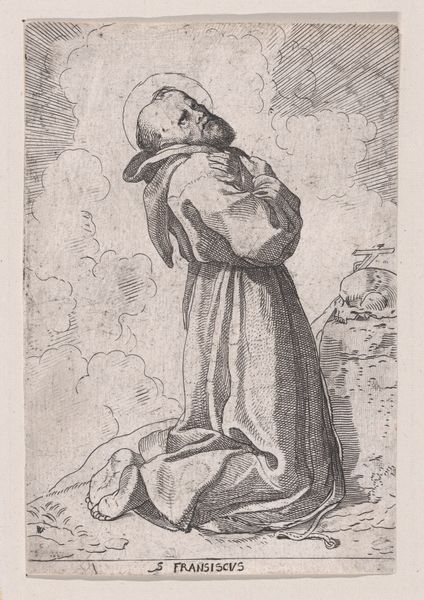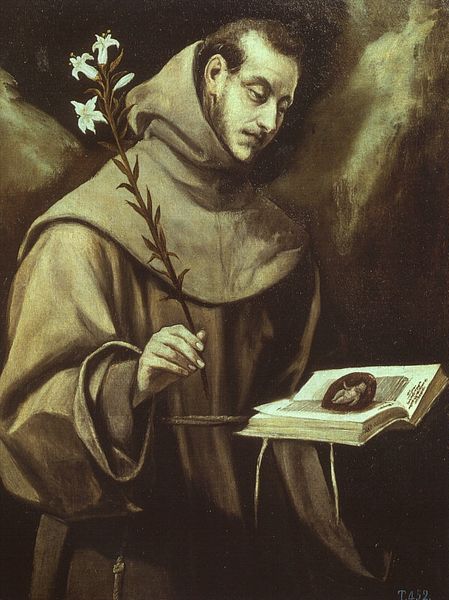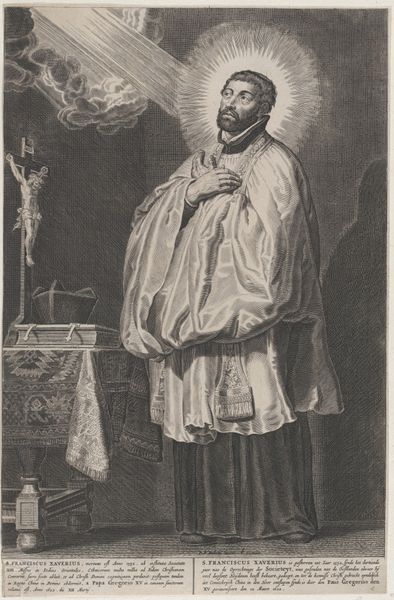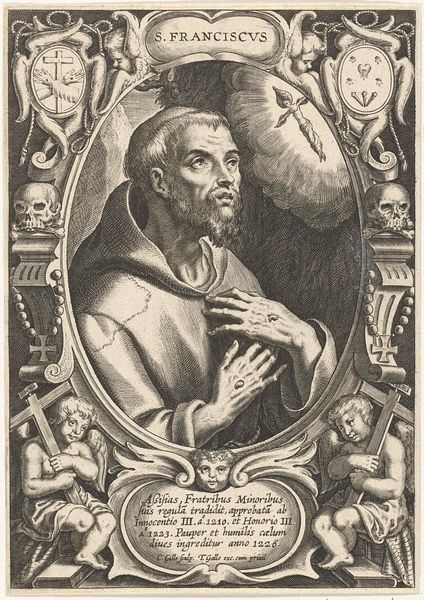
Dimensions: height 306 mm, width 233 mm
Copyright: Rijks Museum: Open Domain
Jan van der Bruggen created this print of H. Bruno sometime between 1649 and 1709. Dominating the composition, we see Bruno with his hands crossed over his chest, a gesture laden with meaning. It signifies piety, humility, and contemplation, a posture rooted in centuries of religious art and practice. The crossed hands, however, are not confined to Christian iconography. In ancient cultures, similar gestures could denote reverence or submission before a deity. Think of Egyptian pharaohs depicted with crossed arms over their chests in their sarcophagi, symbolizing their eternal rest and authority in the afterlife. The motif resurfaces in medieval funerary art, evolving into a symbol of peaceful death and spiritual readiness. Here, in Bruggen’s work, it merges both the personal piety of Bruno and the broader themes of mortality, underscored by the presence of the skull. These symbols evoke profound emotional responses, tapping into our collective consciousness and reminding us of the cyclical nature of life and death.
Comments
No comments
Be the first to comment and join the conversation on the ultimate creative platform.
